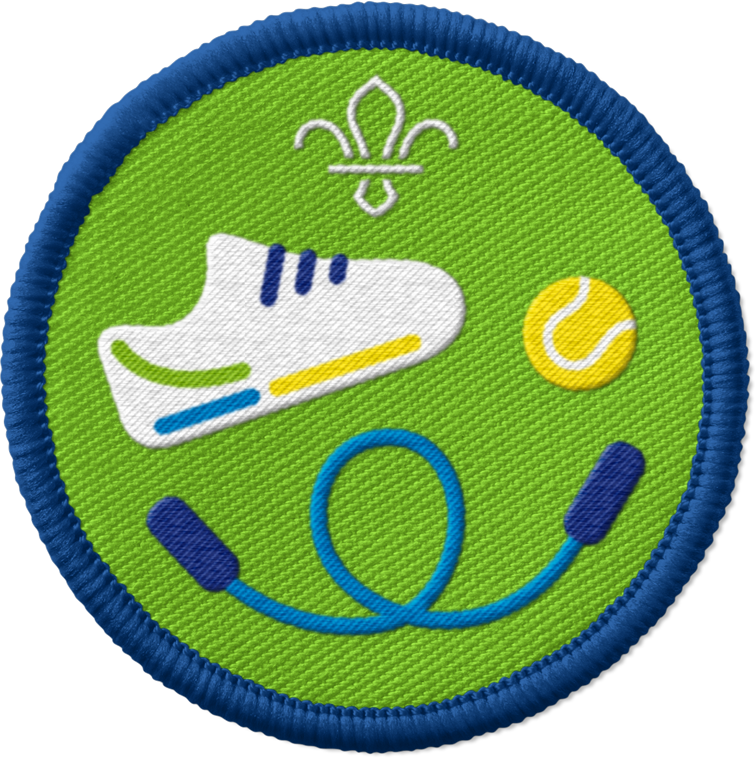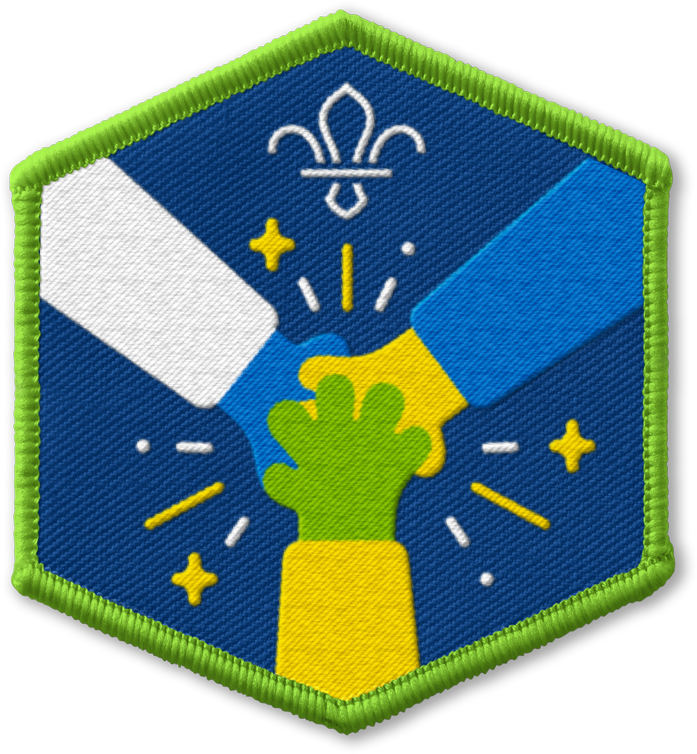
Play Sharky, Sharky
Before you begin
- Use the safety checklist to help you plan and risk assess your activity. There's also more guidance to help you carry out your risk assessment, including examples. Don’t forget to make sure all young people and adults involved in the activity know how to take part safely.
- Make sure you’ll have enough helpers for each team to have one. You may need some parents and carers to help if you’re short on helpers.
To watch in full screen, double click the video
Setting up the game
- Remember to check the terrain and make sure the game area is free of hazards. For example, hazards could be dips in the grass, steps, rocks or rivers if you’re playing outside.
- Find a way to identify the shark, such as by wearing a necker.
- Before you start, make sure the game area is safe and clear of hazards. It may be that the certain things can’t be avoided in the natural environment but think about the speed the game is likely to be played at. Will the obstacles be seen?
- A good idea indoors is to have a 'stop' line away from the walls, obstacles or other hazards for running up and down games. This allows space to reach the wall or other obstacles at a lower speed, reducing the potential for a broken wrist or bumps.
Playing the game
- Gather everyone together and explain you’re going to be playing a game called ‘Sharky, Sharky’.
- Explain the signal to stop play and how long the game will go on for. A long blast on a whistle works well as a signal to stop the game.
- Choose someone to be the shark. They should stand in the middle of the space.
- Everyone else is the fishes. They must then line up at the one end of the space.
- When you’re ready to play, the fishes should shout ‘Sharky, sharky, you can’t catch me’
- The shark shouts back ‘Only if …’ and decides who to call forward. For example, it could be ‘Only if you’re wearing red’, ‘Only if you like street dance’ or ‘Only if you’re wearing a hat’.
- The fishes that the statement applies to must try to run to the opposite end of the space, past the shark who’ll be trying to catch them.
- The shark needs to try to tag as many people as possible.
- If the shark catches someone, that person needs to stop and stand still. The caught fish becomes seaweed.
- As seaweed, they can’t move their feet. However, they can reach out with their arms and attempt to try to catch other fishes in the group when they run past.
- The game continues in the same way with anyone the shark or seaweed catches becoming seaweed. The last person to be caught becomes the shark in the next game.
Reflection
This game was all about determination. Was it hard trying to run past the shark? How did you problem-solve or think of a strategy to get across the space? Did you work as a team with other players?
If you were caught, what was it like becoming seaweed and helping the shark? Did you have any tactics to catch people?
If you were the shark, you had to think creatively to try to get as many people moving across the space. How did you think of the statements? What did people have in common?
Safety
All activities must be safely managed. You must complete a thorough risk assessment and take appropriate steps to reduce risk. Use the safety checklist to help you plan and risk assess your activity. Always get approval for the activity, and have suitable supervision and an InTouch process.
- Active games
The game area should be free of hazards. Explain the rules of the game clearly and have a clear way to communicate that the game must stop when needed. Take a look at our guidance on running active games safely.
- Contact games and activities
Make sure everyone understands what contact is acceptable, and monitor contact throughout the activity.
- To make the game easier, you could play over a wider area or have a list of statements for people to read out.
- To make the game harder, you could play over a smaller area or have multiple sharks.
- If anyone needs to, they could sit on a chair to be the shark or the seaweed.
- To make it easier, people could play in pairs, such as moving together across the space or starting with two sharks.
- Take time and have patience while telling everyone what to do. Give short instructions clearly and concisely. If you need to, pause, then repeat the same instruction using the same words. You could have visual resources to explain the game or a printed copy of the instructions for anyone who may need them.
- You could have a practice round of the game to make sure everyone knows what they’re doing. Let young people help explain to each other what to do, too.
- If it’s too noisy and anyone doesn’t like the noise, the person leading the activity can remind everyone to be quieter. People could wear ear defenders, or you could run the activity outside.
All Scout activities should be inclusive and accessible.
Young people can decide what statements to call out.



